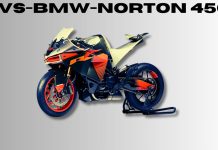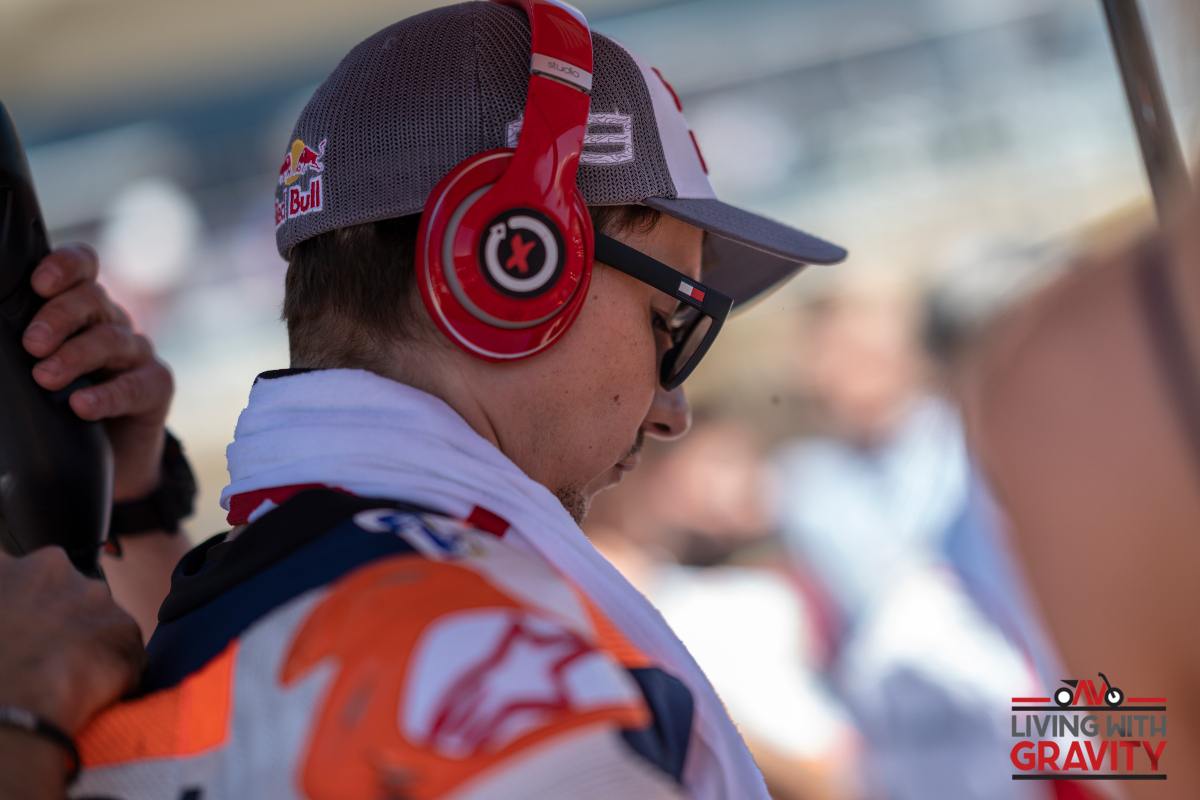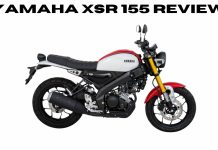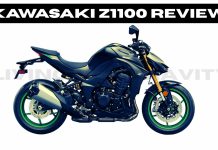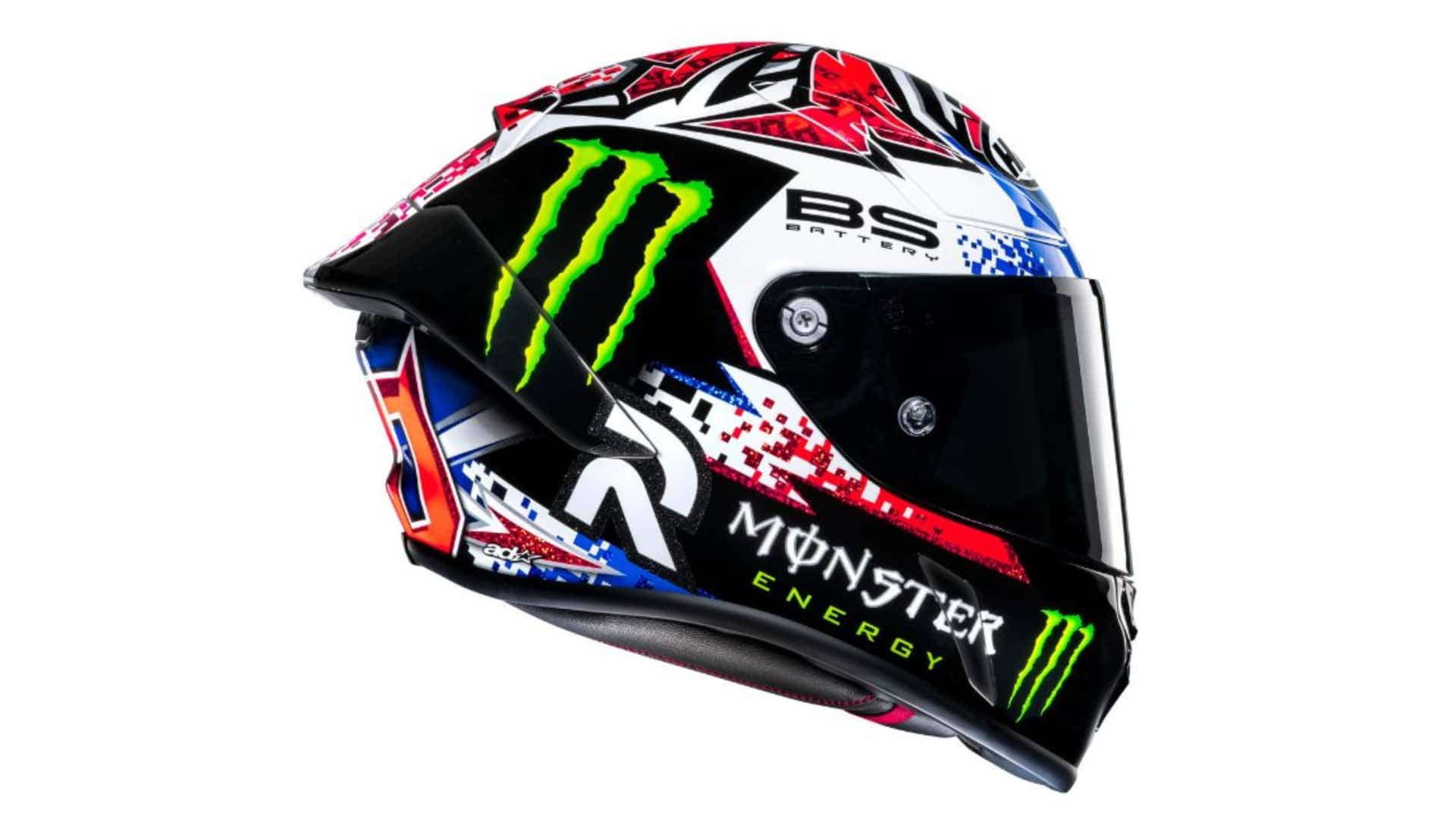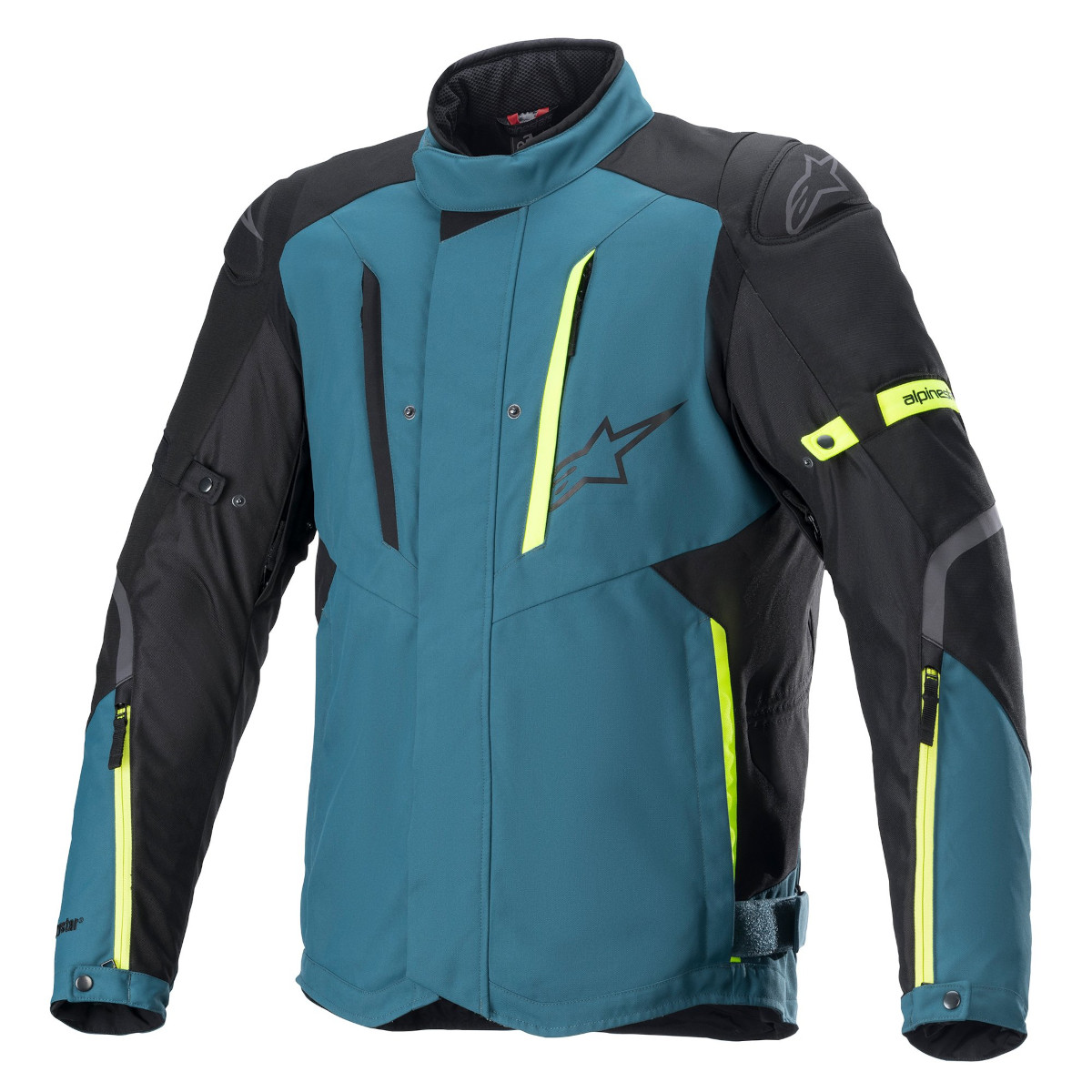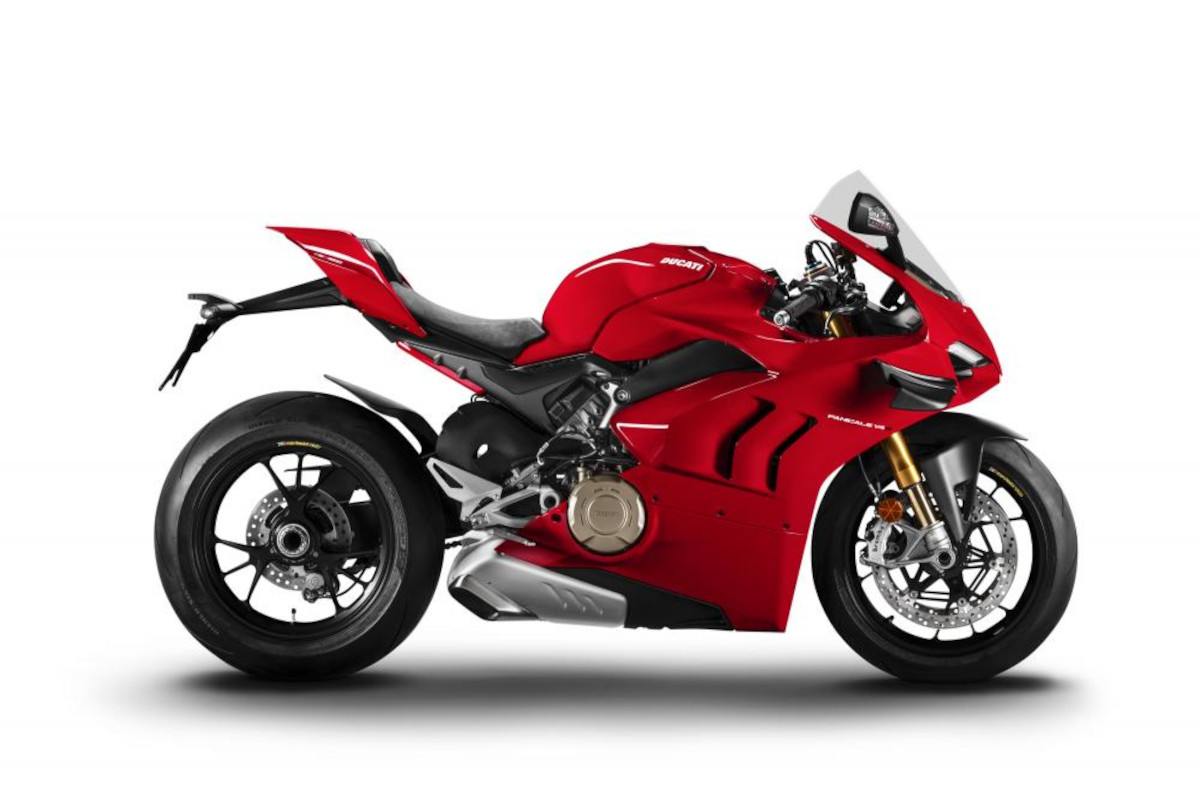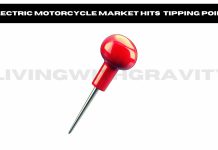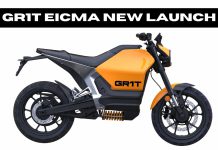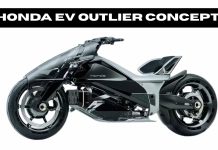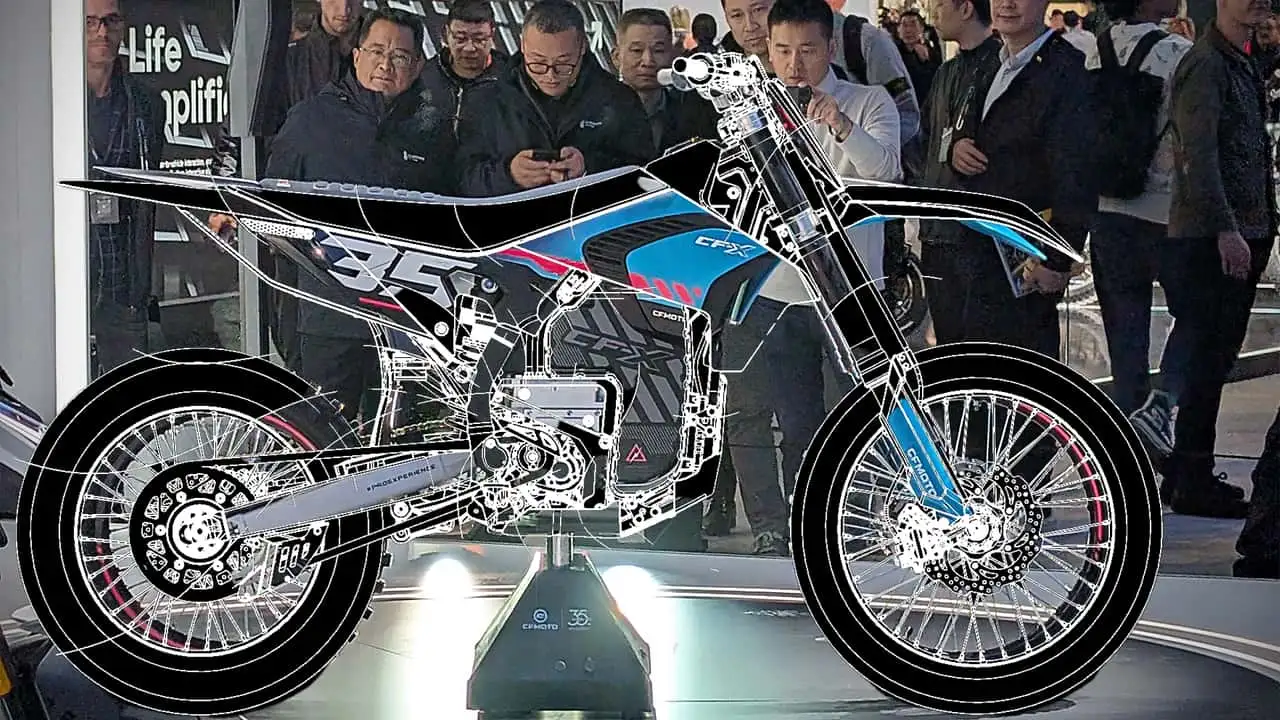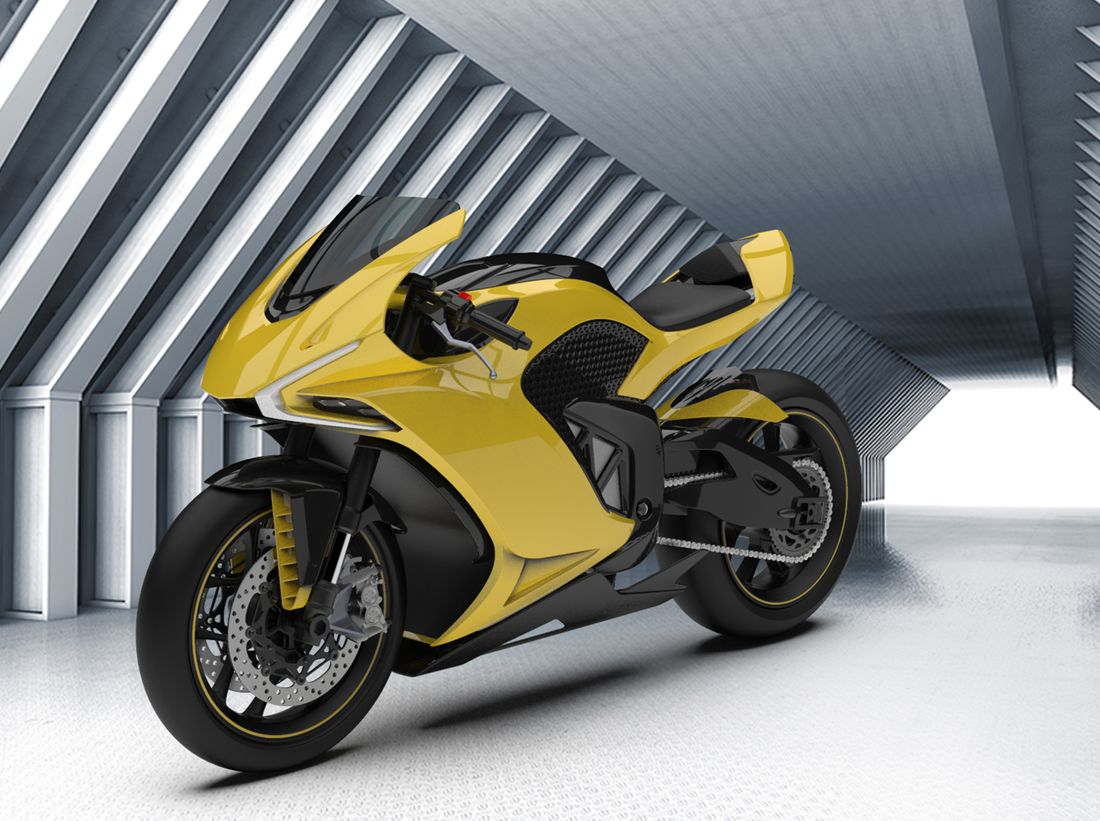I. The Roar Fades: Embracing the Electric Dawn of Dirt Biking
The world of off-road motorcycling is undergoing a profound transformation, moving beyond the nostalgic roar of gasoline engines towards a new era powered by electricity. For many enthusiasts, the visceral sound of a two-stroke engine or the thump of a 450cc four-stroke has long defined the sport. Yet, a growing sentiment, even among seasoned riders and industry leaders, acknowledges that these gasoline-powered machines are, regrettably, a relic of the past, a “dying breed”. This shift is not merely a technological upgrade but a fundamental re-evaluation of what constitutes a high-performance off-road machine, driven by compelling practical and environmental advantages.
The evolving perspective within the industry is particularly striking when an individual who “grew up braaping all over town” openly declares that electric dirt bikes “make far more sense in almost every conceivable way” . This personal conviction, coming from a figurehead in the powersports media, underscores a significant cultural acceptance of electric vehicles (EVs) that transcends traditional loyalties. The very notion of this statement being “sacrilege” yet simultaneously “the truth” highlights the deep emotional attachment to internal combustion engines (ICE), making the embrace of EVs by such figures a powerful indicator of market inevitability. This suggests that the conversation within the industry has moved beyond questioning if electric dirt bikes will dominate, to focusing on how quickly and how effectively this transition will occur. The shift in mindset is as critical as the technological advancements themselves.
The inherent advantages of electric dirt bikes are indeed compelling. They are described as “lighter, have less rotating mass which makes them eminently more flickable, produce more power than their gas cousins, and require less maintenance” . These attributes directly translate to an improved rider experience, offering enhanced agility, immediate power delivery, and reduced operational complexities. Furthermore, a pivotal advantage highlighted is their “quiet as hell” operation, allowing riders to “ride them wherever without pissing off your neighbors” . This quietness directly addresses a major historical pain point for traditional dirt biking: noise pollution.
Track closures due to land-use and noise rules have been a significant restraint on the dirt bike market, particularly in regions like North America and the EU.1 By mitigating noise, electric dirt bikes can alleviate community opposition, potentially preventing further riding area restrictions and even opening up new locations previously deemed off-limits. This not only expands the overall addressable market for dirt biking but also aligns with increasing environmental concerns, contributing to an eco-friendly ride.2 The success of models like the Stark Varg and the emerging presence of CFMoto’s CF-X, with more EV dirt bikes being observed in local riding areas than gas bikes, serve as tangible evidence of this burgeoning trend .
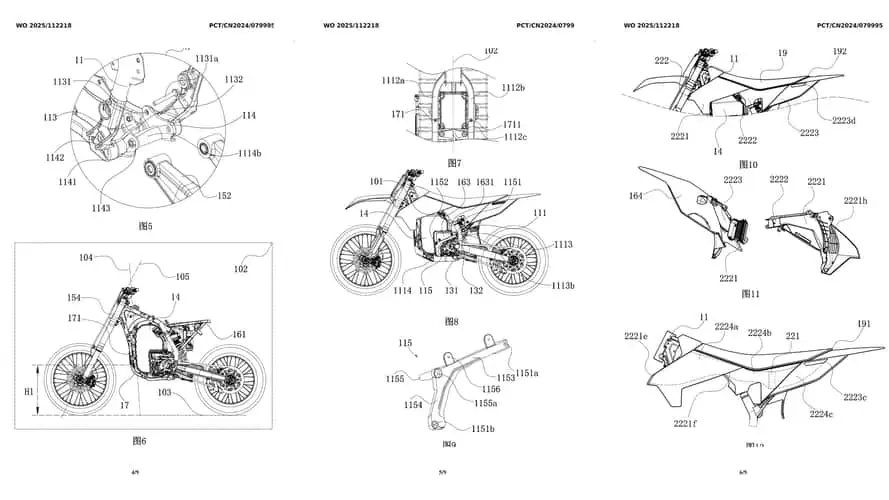
II. Stark Varg: Setting the Electric Benchmark
The Stark Varg has rapidly established itself as a formidable force in the electric dirt bike market, setting a new benchmark for performance and design. Its success stems from a combination of raw power, extended range, and a meticulously engineered design philosophy that prioritizes rider experience.
Performance, Range, and Design: What Makes the Varg a Hit
At the heart of the Stark Varg’s appeal is its impressive powertrain. It boasts an 80 horsepower electric motor that delivers an “incredible 938 Nm of torque on the rear wheel”.2 This power output is substantial, with claims of providing “30% more peak power than a 450cc” gas-powered motocross bike.2 This directly challenges the traditional “450 thumper” benchmark, signaling a new era of performance where electric propulsion can surpass its ICE counterparts. Complementing this power is a 6.5 kWh battery, offering a remarkable riding range of “up to 6 hours of technical riding or conquer a full motocross race”.2 Crucially, this extensive range is paired with a rapid recharge time of “under 2 hours” 2, addressing common concerns about downtime and usability for serious riders.
The Varg’s agility is further enhanced by its lightweight construction, with reported weights ranging from 110 kg to 118 kg.2 This low weight contributes significantly to its flickability. Beyond raw specifications, the Varg’s design philosophy, defined as “Performance, Human art” 4, plays a pivotal role in its market differentiation. This approach is not merely aesthetic; it is deeply integrated with functional benefits. The “Performance” aspect refers to optimized engineering, while “Human art” aims to create a natural, organic shape. The elimination of components like front radiators and exhaust systems, made possible by the electric powertrain, allowed for “optimized ergonomics – chiseled to perfection”.5
This design choice leads to “better handling and control, longer riding, with less effort”.5 This holistic design, which focuses on enhancing the rider’s physical experience and reducing fatigue through intelligent component packaging and ergonomics, goes beyond simply delivering raw power. It creates a more comfortable and less fatiguing ride, which is a significant differentiator in a physically demanding sport like dirt biking, contributing to the Varg’s widespread appeal.
Rider customization is another key feature, with “over 100 customizable modes” and advanced KYB suspension offering 310mm travel.2 This level of tunability allows riders to precisely tailor the bike to specific conditions, terrains, and personal preferences. The Varg also emphasizes a “low and optimized center of gravity very close to the rider’s lower leg position,” which creates a “featherweight riding sensation” and enhances agility.4

Technical Deep Dive: Motor, Battery, and Chassis Innovations
The engineering prowess behind the Stark Varg is evident in its innovative motor, battery, and chassis design. The motor features a “carbon fiber housing” and operates at “360 nominal voltage”.4 To reduce mass and simplify cooling, the inverter is “integrated into the motor case”.4 A crucial innovation is the motor’s “water-cooled aluminum casing,” which “doubles as a structural part of the chassis”.4 This structural integration of electric components is a fundamental paradigm shift in chassis design. In traditional ICE bikes, the engine is a separate unit mounted within the frame. With EVs, the motor and often the battery can be designed with robust casings that become integral, load-bearing parts of the motorcycle’s frame.6
This approach offers several profound advantages: it reduces the number of dedicated frame components, leading to a lighter overall structure; it allows for precise component placement to achieve an ideal weight distribution, contributing to the “featherweight riding sensation” 4; and it enables the frame to be engineered with precise vertical, lateral, and torsional flex, resulting in a more predictable and stable ride.5 This represents a fundamental engineering advantage of EVs over ICE, enabling a new generation of lighter, more agile, and better-handling dirt bikes.
The chassis itself is an “ultralight tubular chromoly steel structure, weighing less than 6 kg,” earning it the title of “the world’s lightest motocross frame”.5 This is complemented by an aluminum subframe with straight tubular pipes and forged connections, and a carbon fiber front subframe that not only streamlines ergonomics but also funnels airflow to the battery, motor, and radiator located under the seat.5 Further innovations include a “mid-mount linkage bracket on the swingarm” that provides a significant “60mm ground clearance boost” compared to competitors 4, and advanced aluminum casting technology for the swingarm to achieve even greater weight savings.5 High-quality components extend to the wheels, which feature “forged and CNC-machined 6082 T6 hubs,” “highest-grade steel spokes,” and “7050 T6 aluminum aero-grade rims”.4 These meticulous engineering choices collectively contribute to the Stark Varg’s superior performance and handling characteristics, solidifying its position as a leader in the electric dirt bike segment.
III. CFMoto CF-X: A Glimpse into the Future Contender
CFMoto’s CF-X represents a significant step forward in the adult electric dirt bike segment, poised to challenge existing market leaders. While initially teased with minimal details, recent patent filings and EICMA presentations have unveiled a machine brimming with advanced engineering and rider-centric design.
Unveiling the Patent: Engineering Prowess and Design Philosophy
The CF-X first made a brief appearance at EICMA, presented as an “unmistakably an EV off-roader” with no accompanying details or press images, deliberately building anticipation. Subsequent patent applications, despite a generic “Motorcycle” title, definitively reveal CFMoto’s electric dirt bike through detailed drawings and an abstract outlining its core components: “a frame, a body covering member, a traveling system, a power assembly, a traction battery, a saddle system, and a heat dissipation system”.7
The patent drawings reveal high-performance components such as “inverted forks and a rear shock with a remote reservoir,” signaling CFMoto’s commitment to serious performance.7 The battery pack is strategically positioned “as low in the dirt bike’s chassis as you can get,” contributing to an optimized center of gravity, and the motor “looks stout” . While specific performance figures are not detailed in the patent, EICMA information has indicated an “advanced 400-volt architecture” and a promise of “performance that’s promised to be on a level with 450cc combustion engine competition models”.8 This explicitly positions the CF-X as a direct competitor to high-performance ICE bikes.
CFMoto has a strong history of transitioning “concept bikes with near-identical production models 12 months later,” suggesting that a showroom-ready CF-X could appear around EICMA this November.9 The CF-X is also described as a “scaled-up adult version” of CFMoto’s existing youth electric dirt bike line, which includes models like the CFX-2E and CX-2E/CX-5E.6 This approach demonstrates CFMoto’s strategic play: by establishing a strong foundation and gaining experience in the youth electric dirt bike segment, they have refined battery technology, motor integration, and user interfaces in a less performance-critical environment.
This also allows them to build brand loyalty from a young age. The “scaled-up” nature of the CF-X implies leveraging these proven components and design principles, but the detailed patents indicate significant, adult-performance-specific research and development investment, marking an intelligent evolution rather than simple scaling. This strategy enables CFMoto to enter the competitive adult performance segment with a mature understanding of electric powertrains and a pre-existing market presence, positioning them as a serious contender.
Advanced Cooling Systems: A Key to Performance and Durability
A critical aspect of the CF-X’s engineering prowess, extensively detailed in CFMoto’s patents, is its sophisticated “temperature control” system for both the electric motor and battery.9 The design recognizes that each component operates optimally within distinct temperature ranges, and maintaining these ranges is crucial for peak performance, efficiency, and longevity.
The system employs separate liquid-cooling circuits for the battery and motor, which are uniquely “interlinked via a thermoelectric device using the Peltier effect”.9 This “refrigeration chip” can actively warm or cool either system by reversing the electrical current, offering precise and dynamic temperature management.9 This level of active thermal management is a significant differentiator for high-performance electric dirt bikes. Unlike passive cooling, this system ensures the motor can sustain peak power output without thermal throttling, which is essential for competition-level performance. Furthermore, maintaining the battery at its optimal temperature extends its lifespan and, critically, enables “faster charging”.9 This directly addresses concerns about range anxiety and downtime, making the bike more practical for extended use or racing scenarios. This advanced thermal engineering moves beyond basic cooling to a system that actively optimizes the powertrain for both immediate performance and long-term durability, which is crucial for consumer confidence and competitive viability.
Airflow for the radiator is ingeniously routed through “front side cowls” and a duct running through the “fuel tank” area, under the seat.9 The battery cells are compactly packaged, wrapping around and above the motor, but with a precise “2.4mm gap” to prevent adverse thermal interaction.9
Ergonomic Innovations and Rider-Centric Design
The CF-X’s design extends to rider ergonomics, with its “seat and bodywork itself look straight out of freestyle motocross,” even featuring “grab handles” . This suggests a design focused on aggressive riding and maneuverability.
Further patents reveal groundbreaking “adjustable ergonomics through handlebars and footpegs” that can “rise and drop at the push of a button”.12 This system could even “adjust the bike’s riding position based on the riding mode you are in,” potentially “on the fly”.12 This dynamic adjustability is a significant competitive advantage. Conventional dirt bikes typically have fixed or manually adjustable ergonomics, often requiring tools and a stop to modify. CFMoto’s innovation allows a rider to optimize their body position for specific situations—a more aggressive stance for jumps and corners, a more upright position for technical climbs, or a more comfortable setup for trail riding—without interruption. This caters to a wider range of rider sizes and preferences, enhancing rider control, comfort, and performance across diverse conditions. EICMA 2024 information corroborates this, stating the ergonomics are “purposeful and ‘race-oriented’, but also finely tuned for comfort and practicality for everyday riding”.8 The seat height is specified at 960 mm.8
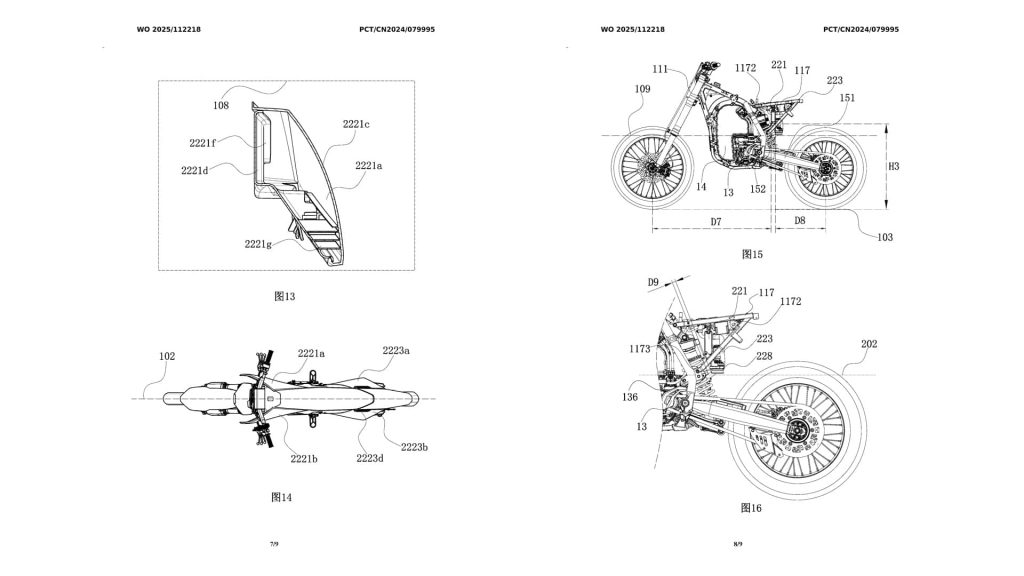
IV. Head-to-Head: CF-X vs. Stark Varg vs. the 450cc Thumper
The emergence of high-performance electric dirt bikes like the Stark Varg and the anticipated CFMoto CF-X signals a clear shift in the competitive landscape, directly challenging the long-standing dominance of 450cc internal combustion engine (ICE) machines. A comparative analysis of these key players highlights the distinct advantages and strategic positioning of each.
Comparative Analysis of Key Specifications and Performance Potential
The “450cc equivalent” benchmark is a strategic communication and performance target for electric dirt bike manufacturers. The 450cc class represents the pinnacle of motocross and off-road racing, serving as the industry standard for power and performance in traditional ICE dirt bikes. By directly comparing their electric bikes to this established benchmark, EV manufacturers are not just making a performance claim; they are strategically signaling that their bikes are legitimate, high-performance machines capable of competing at the highest level. This approach helps to overcome skepticism from traditional riders who might doubt the performance capabilities of electric powertrains and sets a clear performance expectation for the market, indicating that these electric models are designed for serious competition and demanding riders.
The table below provides a direct comparison of the core performance and design attributes, visually emphasizing the inherent advantages of electric bikes and how they stack up against the traditional benchmark.
Table 1: Comparative Specifications: Electric Dirt Bikes vs. ICE 450cc
| Feature | Stark Varg | CFMoto CF-X (Prototype/Patent Estimates) | Typical 450cc ICE Dirt Bike (e.g., KTM 450 SX-F) |
| Power | 80 HP / 60 kW 2 | 450cc ICE equivalent 8 | ~60-65 HP / ~45-48 kW |
| Torque | 938 Nm (rear wheel) 2 | Not specified (looks stout) | ~45-50 Nm |
| Battery Capacity / Fuel Tank | 6.5 kWh 2 | 400-volt architecture 8 | ~7-8 Liters |
| Range | Up to 6 hours / Full MXGP heat 2 | Not specified | ~1.5-2 hours (MX race) |
| Weight | 110-118 kg (243-260 lbs) 2 | 125 kg 8 | ~100-110 kg (220-240 lbs) |
| Frame Material | Chromoly steel, Aluminum, Carbon Fiber 5 | Main frame, accommodating space 7 | Aluminum or Steel |
| Suspension | KYB (310mm travel) 2 | Inverted forks, remote reservoir rear shock, WP (310mm travel) 7 | High-performance, adjustable (e.g., WP, Showa, Kayaba) |
| Cooling System | Water-cooled motor casing 4 | Peltier-effect (battery & motor) 9 | Liquid-cooled (radiators) |
| Key Features | 100+ customizable ride modes, low CoG, integrated motor 2 | Adjustable ergonomics, grab handles, compact battery/motor packaging 9 | Traditional engine characteristics, clutch/gears |
Market Positioning and Competitive Edge
The Stark Varg has successfully established itself as a “hit” , demonstrating robust consumer demand and the viability of high-performance electric dirt bikes. Its innovative design and impressive performance figures set a high bar for competitors. This success, often referred to as the “Stark Varg Effect,” has validated the market demand for such vehicles, shifting the perception from niche to mainstream potential. This validation has acted as a catalyst, forcing other established manufacturers like KTM (with its Freeride E-XC), Zero Motorcycles (DSR/X, FXE), Honda (CR-E), and Yamaha to accelerate their own electric dirt bike research and development and market entry.3 CFMoto’s explicit goal to “go up against the Starks of the world” underscores this competitive pressure. This heightened competition inevitably leads to faster innovation cycles across the industry, ultimately benefiting consumers with more advanced and diverse electric dirt bike options. The Varg’s impact extends beyond its sales; it serves as a powerful catalyst for rapid innovation and competitive intensity across the entire electric dirt bike segment.
CFMoto’s strategic positioning is bolstered by its existing presence in the youth electric dirt bike market 6, which provides a foundation for brand recognition and technological scaling. While CFMoto has a “strategic partnership” with Pierer Mobility (KTM Group), it is clarified that the CF-X is
not linked to KTM.6 This indicates that CFMoto is pursuing its own independent, robust EV development path, leveraging its global manufacturing and research and development capabilities.8 This independent development, combined with their established market presence and innovative patent filings, positions CFMoto as a serious and capable challenger in the high-performance adult electric dirt bike market.
V. The Broader Electric Dirt Bike Landscape
The electric dirt bike market is experiencing a significant surge, driven by a confluence of environmental concerns, technological advancements, and shifting consumer preferences. This section explores the market’s robust growth, key trends, and the challenges that must be addressed for widespread adoption.
Market Growth, Trends, and Key Players Beyond Stark and CFMoto
The global electric dirt bike market is on a robust upward trajectory. Projections indicate a Compound Annual Growth Rate (CAGR) of 15.03% from 2023 to 2032, with anticipated revenue reaching USD 2.16 billion by 2032.3 Another analysis forecasts the Electric Motocross Bike Market to grow at a CAGR of 5% to reach USD 49.25 billion by 2030.13 While the specific market size figures may vary based on definitions (e.g., “dirt bike” vs. “motocross bike”), the consistent trend is one of substantial growth.
The “Adult Electric Dirt Bike” segment currently holds the largest market revenue share 3, indicating a strong demand for performance-oriented models capable of satisfying experienced riders. Lithium-ion batteries dominate the market and are expected to maintain their leadership, propelled by continuous advancements in battery technology that alleviate concerns about range and performance anxiety.3 The “Recreational” segment holds the largest market share in terms of end-use 3, highlighting the broad appeal of electric dirt bikes beyond competitive racing, suggesting a wider demographic embracing the sport.
Geographically, North America currently holds a significant market share.3 However, Europe is anticipated to take the lead during the forecast period, driven by the burgeoning popularity of motocross and off-road racing in key European countries like France, Germany, and Italy, coupled with increasing demand for electric motorcycles and growth in tourism activities.13
Key market drivers include increasing environmental consciousness, rising demand for eco-friendly transportation, the growing popularity of off-road sports, continuous technological advancements in battery and motor technology, and supportive government incentives and regulations.1
Beyond the prominent Stark and CFMoto, the market is populated by a growing number of diverse players. Established names like KTM (with its Freeride E-XC), Zero Motorcycles (DSR/X, FXE), and Husqvarna are present.3 Emerging innovators such as Sur-Ron and Talaria are gaining traction, while major Japanese manufacturers like Honda (with its CR-E) and Yamaha (investing in e-motor technology) are also making significant strides.3 Chinese manufacturer Kove and Indian manufacturer Hero have also showcased electric dirt bike prototypes.6
A seemingly paradoxical aspect within the market is the mention of “high maintenance cost of dirt bikes” as a “primary constraint” impeding market growth 13, despite electric dirt bikes generally requiring “less maintenance” due to fewer moving parts.2 This apparent contradiction is resolved by understanding the different types of maintenance and costs involved. While EVs indeed eliminate traditional engine-related maintenance (e.g., oil changes, valve adjustments, spark plugs), leading to lower
operational maintenance costs, high-performance dirt biking, regardless of its power source, inherently involves significant wear-and-tear on components like tires, chains, sprockets, suspension servicing, brakes, and general crash repairs.1 These are “maintenance costs” that are not eliminated by electrification. This highlights that while EVs offer significant savings in powertrain-specific maintenance, the inherent demands and wear-and-tear of off-road riding still contribute to a notable overall cost of ownership, especially when combined with high initial purchase prices.1 This nuance is critical for a comprehensive understanding of market barriers.
Table 2: Global Electric Dirt Bike Market Overview
| Metric / Segment | Details |
| Market Size (USD Billion) | 2023: 0.61 3 |
| 2024: 0.7 3 | |
| 2032 (Forecast): 2.16 3 | |
| CAGR (2024-2032) | 15.03% 3 |
| Key Market Segments (by Type) | Vehicle Type: Youth Electric Dirt Bike, Adult Electric Dirt Bike, Electric Balance Bike 3 |
| Battery Type: Lithium-ion, Lead-acid, Nickel-metal hydride 3 | |
| Motor Power: <500W, 500W-1000W, >1000W 3 | |
| End Use: Recreational, Commuting, Racing 3 | |
| Dominant Segments/Trends | Adult Electric Dirt Bike (largest revenue share) 3 |
| Lithium-ion batteries (largest market share) 3 | |
| Recreational (largest market share) 3 | |
| Key Market Drivers | Rising demand for eco-friendly vehicles, growing popularity of off-road sports, technological advancements in battery/motor, government incentives/regulations 1 |
| Key Market Restraints | High purchase & maintenance costs, track closures (noise/land-use), battery-grade lithium price volatility, rapid tire attrition 1 |
| Leading Regions | North America (significant share), Europe (anticipated to lead by 2030) 3 |
Navigating the Terrain: Regulatory Challenges and Infrastructure Development
Despite the positive market trends, the electric dirt bike segment faces notable restraints. These include the high initial purchase costs, the aforementioned track closures due to land-use and noise rules, volatility in battery-grade lithium prices, and the ongoing expense of rapid tire attrition.1
The regulatory environment presents both opportunities and significant challenges. While a “regulatory push toward electric dirt bikes” and government incentives are identified as drivers 1, there is a pervasive “lack of a consistent classification” for electric bikes and motorcycles globally and even within the United States.14 Regulations vary widely by municipality and state, sometimes leading to outright bans or conflicting rules regarding speed limits, motor output, and age restrictions.14 The “X Games’ banning of Stark’s Varg” serves as a real-world example of this regulatory friction, where event organizers grapple with new technologies that don’t fit existing frameworks. The issue is further complicated by the availability of “conversion kits” online that can alter e-bikes to higher power models, thereby evading initial regulatory labeling requirements.15
This regulatory landscape, where government intervention is crucial for driving the EV transition, can be a double-edged sword. Regulations like California’s rule requiring 50% of new motorcycle sales to be electric by 2035 and Euro 5+ emissions standards for ICE bikes provide strong commercial incentives for original equipment manufacturers (OEMs) to invest in and shift capital towards electric models, thereby accelerating market development and product availability.1 However, inconsistent or overly restrictive regulations create confusion for consumers and manufacturers alike. Poorly conceived or fragmented regulations can become significant barriers, slowing down what is otherwise a rapidly growing market. A unified, forward-looking regulatory framework is therefore essential for sustained, widespread adoption.
Furthermore, slow rural charging rollouts and persistent “range anxiety” continue to hinder mass uptake, particularly among endurance racers who require extended riding times and reliable charging infrastructure.1 Addressing these infrastructure gaps is critical for the long-term success of the electric dirt bike market.
VI. The Future is Electric: Implications for Riders and the Industry
The analysis unequivocally points to an electric future for dirt biking, a transition driven by inherent advantages, technological innovation, and evolving societal demands. The “dawn of a new era” is not merely a slogan but a tangible shift with profound implications for riders, manufacturers, and the broader powersports industry.
Electric dirt bikes offer a compelling package of superior performance metrics, including instant torque and power-to-weight ratios that can surpass traditional ICE counterparts.2 They also promise reduced operational maintenance due to fewer moving parts, quiet operation that mitigates noise pollution, and inherent environmental benefits through zero emissions.2
The Stark Varg has successfully set a high benchmark, demonstrating the market’s readiness for high-performance electric models and acting as a powerful catalyst for competitive innovation across the industry.8 CFMoto’s CF-X, as revealed by its detailed patents and EICMA teasers, is poised to be a formidable contender. Its advanced thermal management systems, dynamic ergonomic innovations, and strategic scaling from a successful youth electric bike line position it strongly against the current market leader.6
The electric dirt bike market is experiencing significant growth, fueled by technological advancements and environmental consciousness. However, it navigates challenges related to high initial costs, the need for robust charging infrastructure, and the complexities of inconsistent regulations.1
The “quiet revolution” brought about by electric dirt bikes, as emphasized by their ability to operate without “pissing off your neighbors” , has a profound impact on access and public perception. Historically, noise pollution has been a major source of conflict between off-road riders and local communities, often leading to restrictions and closures of riding areas.1 The near-silent operation of electric dirt bikes fundamentally removes this conflict point. This quietness, coupled with zero emissions, can significantly improve the public perception of dirt biking, transforming it from a potentially disruptive activity to a more environmentally friendly and community-compatible recreational pursuit. This improved perception could lead to the mitigation of existing restrictions, the opening of new riding areas, or even the integration of riding trails into multi-use public lands where ICE bikes are prohibited. This significantly expands the overall addressable market for dirt biking by making it more accessible and less controversial.
For riders, this shift promises a new era of performance, control, and accessibility. The immediate, linear torque delivery and potentially lighter, more agile chassis (due to optimized weight distribution and structural integration) will fundamentally alter how dirt bikes handle and perform on trails and tracks. Riders will experience different acceleration curves, braking characteristics (potentially with regenerative braking), and cornering dynamics. While core riding skills like balance and throttle control remain, the application of these skills will evolve. The “user-friendly experience” and “simplified operation” 2 might lower the barrier to entry for new riders, making it easier to learn. However, mastering the instant torque and unique handling of high-performance EVs will require new nuances in technique for experienced riders. This signifies that the “dirt bike” itself is being redefined by electrification, not just in terms of its power source, but in its fundamental riding experience, potentially leading to a broader demographic of riders and new avenues for the sport’s growth.
For manufacturers, the focus shifts decisively from internal combustion engine refinement to battery technology, electric motor efficiency, advanced thermal management, and sophisticated electronics.9 The ability to innovate rapidly in these areas, coupled with adaptable manufacturing processes, will be paramount for market leadership. The industry as a whole will need to proactively navigate the evolving regulatory landscapes, invest strategically in charging infrastructure, and continuously address the total cost of ownership to ensure sustained growth and mass adoption of electric dirt bikes. The future of dirt biking is not just electric; it is a future of expanded possibilities and redefined riding experiences.
Sources
- Dirt Bike Market Size & Share Analysis – Industry Research Report – Growth Trends 2030, accessed on July 13, 2025, https://www.mordorintelligence.com/industry-reports/dirt-bike-market
- What to Know About the Stark Electric Dirt Bike – happyrunsports, accessed on July 13, 2025, https://www.happyrunsports.com/blogs/knowledge/what-to-know-about-the-stark-electric-dirt-bike
- Electric dirt bike Market size & future growth 2032 – WiseGuy Reports, accessed on July 13, 2025, https://www.wiseguyreports.com/reports/electric-dirt-bike-market
- STARK VARG – WMR Competition Performance, accessed on July 13, 2025, https://wmr1.com/products/stark-varg
- Stark Varg MX – Fresh Bikes, accessed on July 13, 2025, https://www.freshbikeservice.com/stark-varg-mx
- CFMoto lead electric dirt bike shocks at EICMA Show – Enduro21, accessed on July 13, 2025, https://enduro21.com/en/bikes/latest/cfmoto-lead-electric-dirt-bike-shocks-at-eicma-show
- Here’s CFMoto’s All-Electric Dirt Bike Way Before You’re Supposed to See It – RideApart.com, accessed on July 13, 2025, https://www.rideapart.com/news/765326/cfmoto-electric-ev-dirt-bike-patent-cfx/
- CFMOTO Shows off its new drive technology at EICMA 2024, accessed on July 13, 2025, https://cfmotobenelux.com/en/cfmoto-toont-zijn-nieuwste-aandrijftechnologie-op-de-eicma-2024-met-een-breed-assortiment-aan-nieuwe-producten/
- CFMoto CF-X’s Clever Battery Cooling – Cycle World, accessed on July 13, 2025, https://www.cycleworld.com/motorcycle-news/cfmoto-cf-x-battery-and-motor-cooling-design/
- 2025 CFMOTO CFX-2E | Childrens Dirt Bike, accessed on July 13, 2025, https://www.cfmotousa.com/inventory/unit/cfx-2e
- Introducing CFMOTO’s First Electric Youth Dirt Bikes: The CX-2E and CX-5E, accessed on July 13, 2025, https://press.cfmoto-motorcycle.eu/news-introducing-cfmotos-first-electric-youth-dirt-bikes-the-cx-2e-and-cx-5e?id=200378&menueid=29413&l=uk
- CFMoto patents reveal adjustable ergonomics through handlebars and footpegs, accessed on July 13, 2025, https://www.visordown.com/news/cfmoto-patents-reveal-adjustable-ergonomics-through-handlebars-and-footpegs
- Electric Motocross Bike Market | Size, Share, Growth | 2024 – 2030, accessed on July 13, 2025, https://virtuemarketresearch.com/report/electric-motocross-bike-market
- Navigating Regulatory Changes Affecting Electric Motorcycles, accessed on July 13, 2025, https://caofenbikes.com/navigating-regulatory-changes-affecting-electric-motorcycles/
- Electric Bikes Are Emerging as Public Health Hazard – The American College of Surgeons, accessed on July 13, 2025, https://www.facs.org/for-medical-professionals/news-publications/news-and-articles/bulletin/2024/julyaugust-2024-volume-109-issue-7/electric-bikes-are-emerging-as-public-health-hazard/
Our Social Media Handles
- Instagram : LivingWithGravity
- Medium : Akash Dolas
- YouTube Channel : Gear and Shutter

